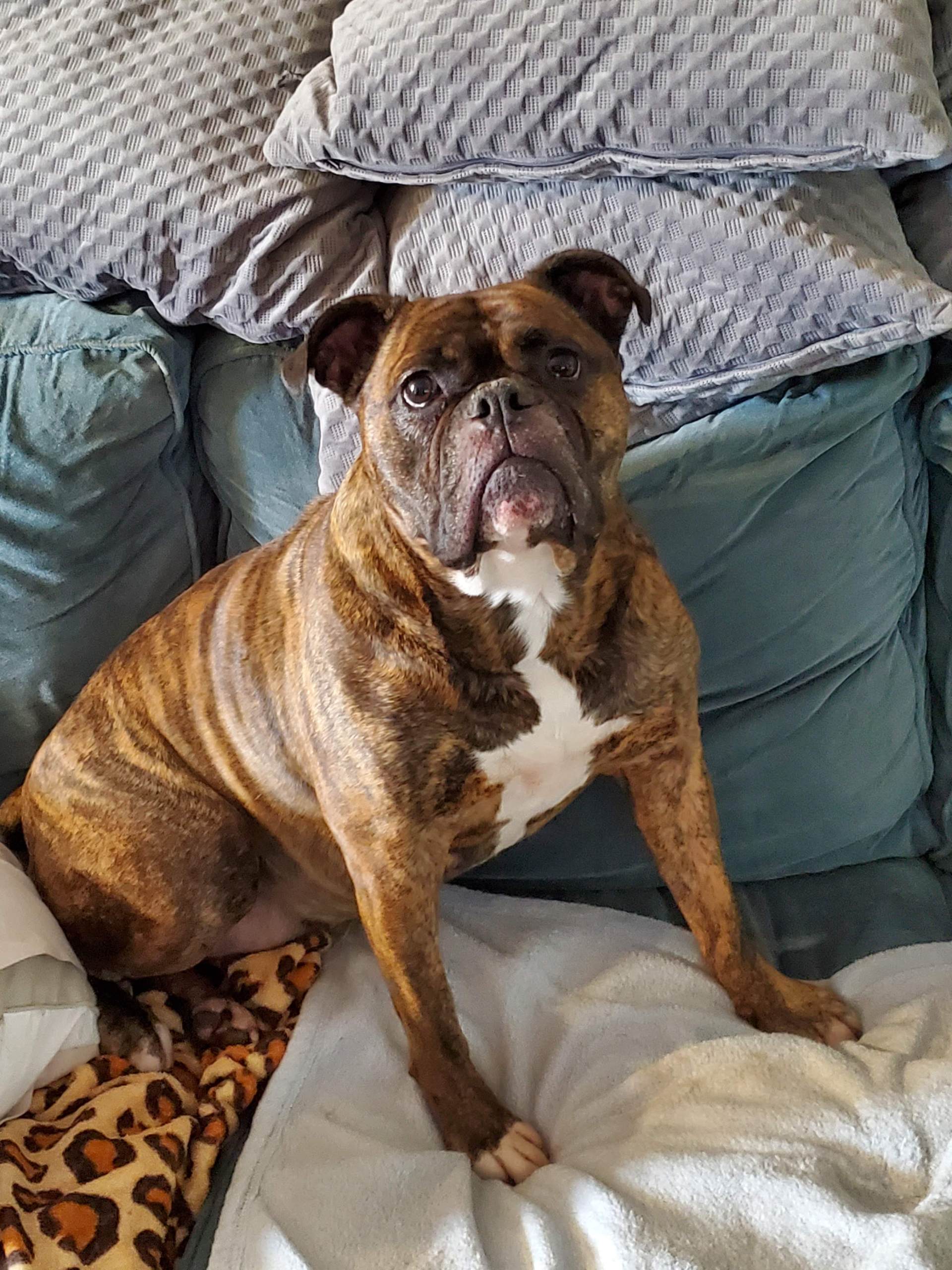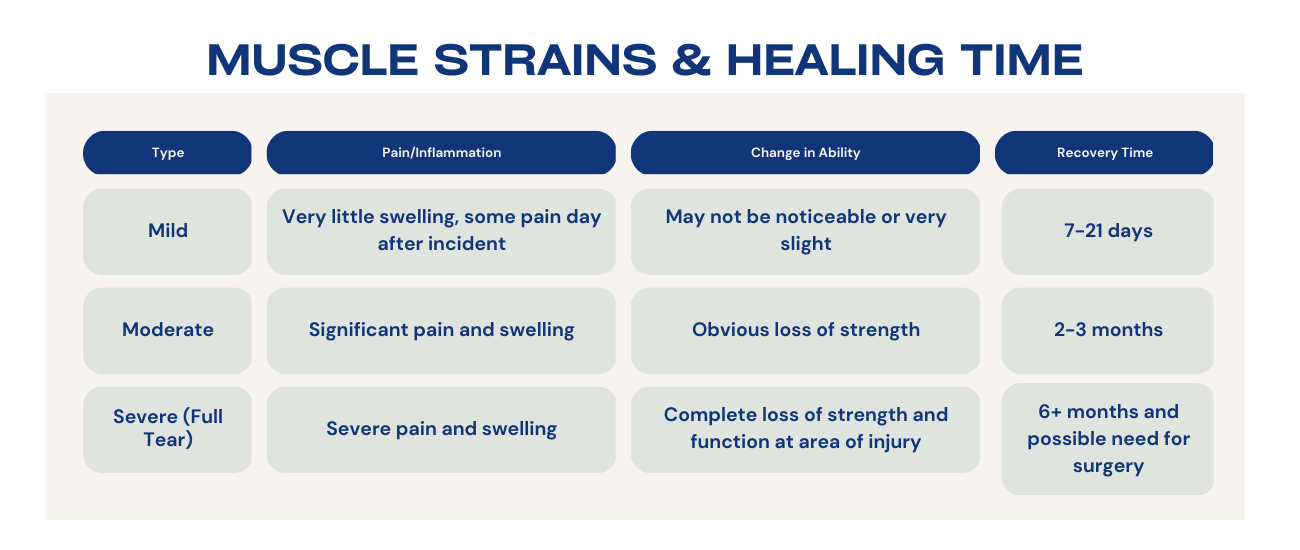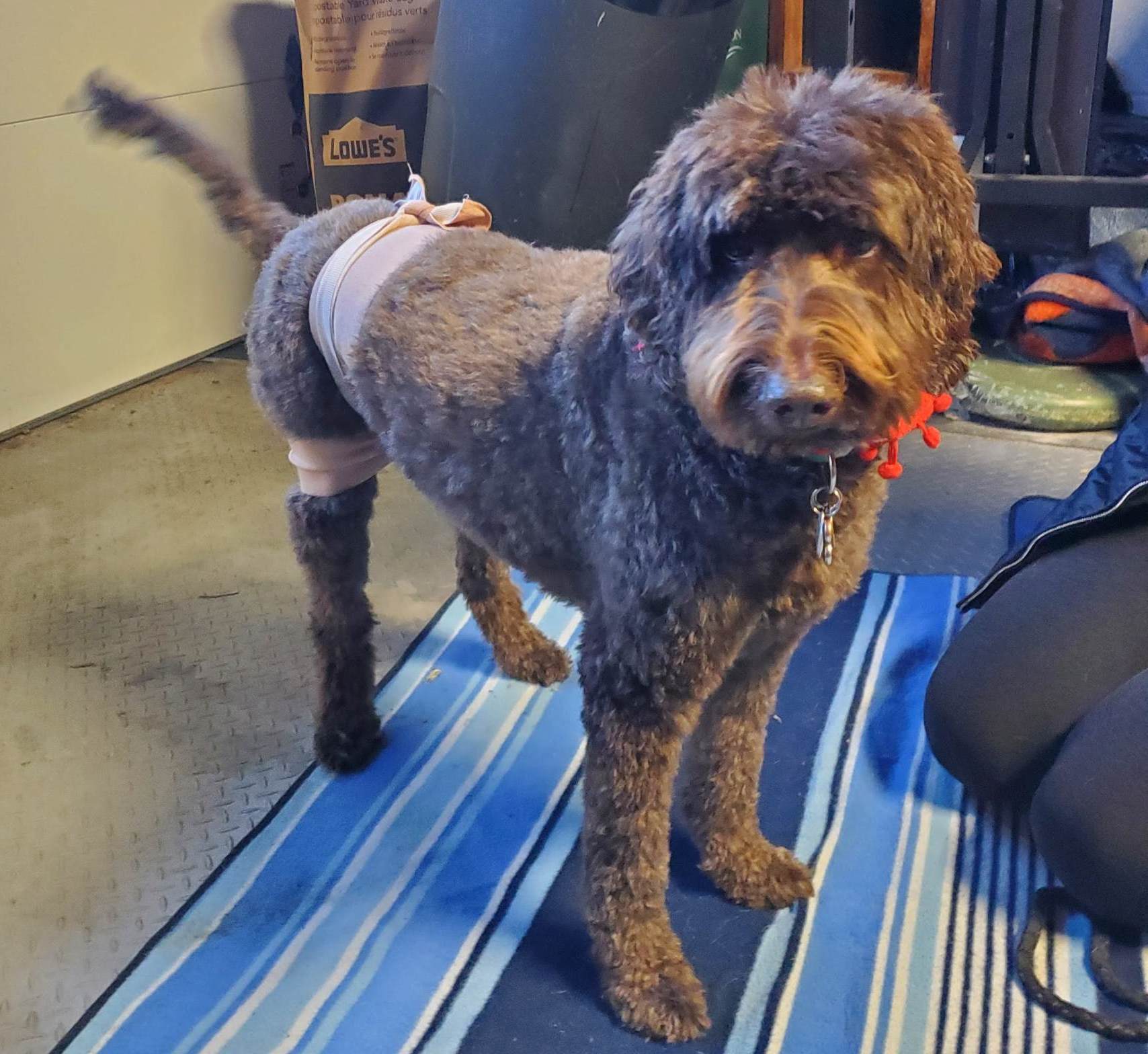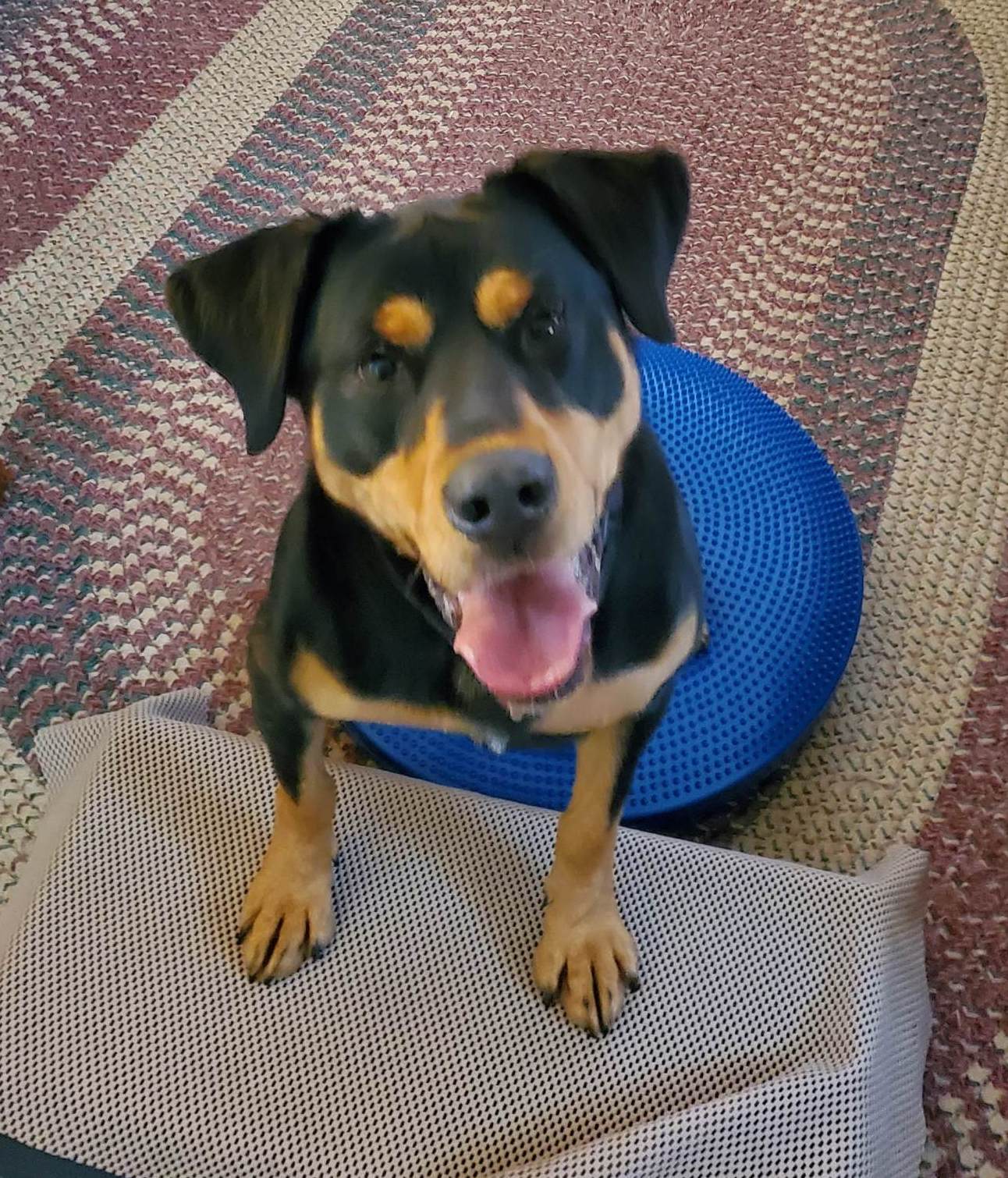Many of us have been there. Our dog gets a bit too excited, plays too hard or maybe they are getting older and they slip or are overusing a muscle. Whatever the cause, our dog is now possibly limping, in pain and they aren’t getting better. Let’s first talk about why a muscle strain or pull happens.
How does a dog pull a muscle?
A muscle strain happens when the force applied to a tissue exceeds how much force that tissue can handle and this leads to damage to the muscle fibres. A minor injury may overstretch a muscle while a more significant injury may cause tearing or a complete muscle rupture.
Activities that might lead to muscle strains in dogs include but aren’t limited to:
-
- Running
- Jumping
- Slipping
- Repetitive activities such as playing fetch
- Overuse of a muscle secondary to another injury (e.g. the back leg opposite to a cruciate tear or a biceps strain when a dog holds up an injured paw)

How long does it take a pulled muscle to heal?
The length of time to heal depends on how significant the initial injury is. Healing time can take anywhere from a week to over 6 months in the case of a full tear requiring surgery.

3 Stages of Healing
Acute Inflammatory Stage
- When a strain initially happens there is a period of inflammation and pain that lasts 4-6 days.
Sub-Acute Stage
- As the inflammation resolves, repair and healing begin
- New tissues are formed but these new tissues are weak and are injured easily
- This period of time can last from 10-17 days or as long as 6 weeks
Chronic Stage
- Signs of injury have resolved
- The new tissues get stronger and increase flexibility
- This stage can last 6 months to a year
Many dogs get stuck in the sub-acute stage. Most owners will reduce their dog’s activity when they notice signs of pain or limping. As mentioned above, two things are happening during that time – new, but weak, tissue fibers are being created and the rest of the body that is being rested also becomes weak. So when we try to get our dog back to their normal activity after a period of rest, the risk of re-injury is higher! And then we repeat the cycle…another period of rest and resolution of visible injury…return to activity…injury and so on while each period of injury keeps getting longer.
Will a dog’s pulled muscle heal itself?
Maybe. If your dog is experiencing DOMS or Delayed Onset Muscle Soreness, which is muscle soreness and swelling that starts 12-24 hours after activity and peaks after 3 days. DOMs will usually resolve on its own and you should continue to do some gentler, less intense exercise with your dog. Continued activity will help maintain blood flow to the sore muscles, flushing out any waste and bringing healing compounds to the area, keep the tissues flexible and prevent weakness from developing in other areas.
As the number of muscle fibers injured increases (i.e. moving from a mild to a moderate muscle strain) the likelihood of your dog recovering without intervention drops.

How do you fix a pulled muscle in a dog?
It is probably easiest to talk about management of an injury by going back to the stages of recovery and what to do in each stage.
Acute Stage
- Going for short, leashed walks within your dog’s tolerance
- Gentle range of motion of the injured body part
- Gentle massage
- Avoidance of aggravating activities
- Can discuss the use of an anti-inflammatory with your vet
Sub Acute Stage
- Progressively increasing activity level
- Strength exercises
- Stretching
Chronic Stage
- Higher intensity exercises such as running, jumping
- Endurance activities


Commonly strained muscles and their symptoms
The iliopsoas muscle flexes the hip and moves the back legs forward. It is stretched when a hindleg is extended backwards. It can be injured during high intensity exercise such as running or jumping, or with overuse such as when it is holding up an injured back leg. The most common sign is hind leg lameness. Bilateral iliopsoas strains can be a sign and result of an issue in the back.
The teres major muscle attaches to the shoulder blade and the humerus (upper arm bone) and acts to extend the front leg and propel a dog forward. It can be injury during high speed running and cutting to run after a moving object (like a ball). Front leg lameness and a head bob would be signs of a teres major strain.